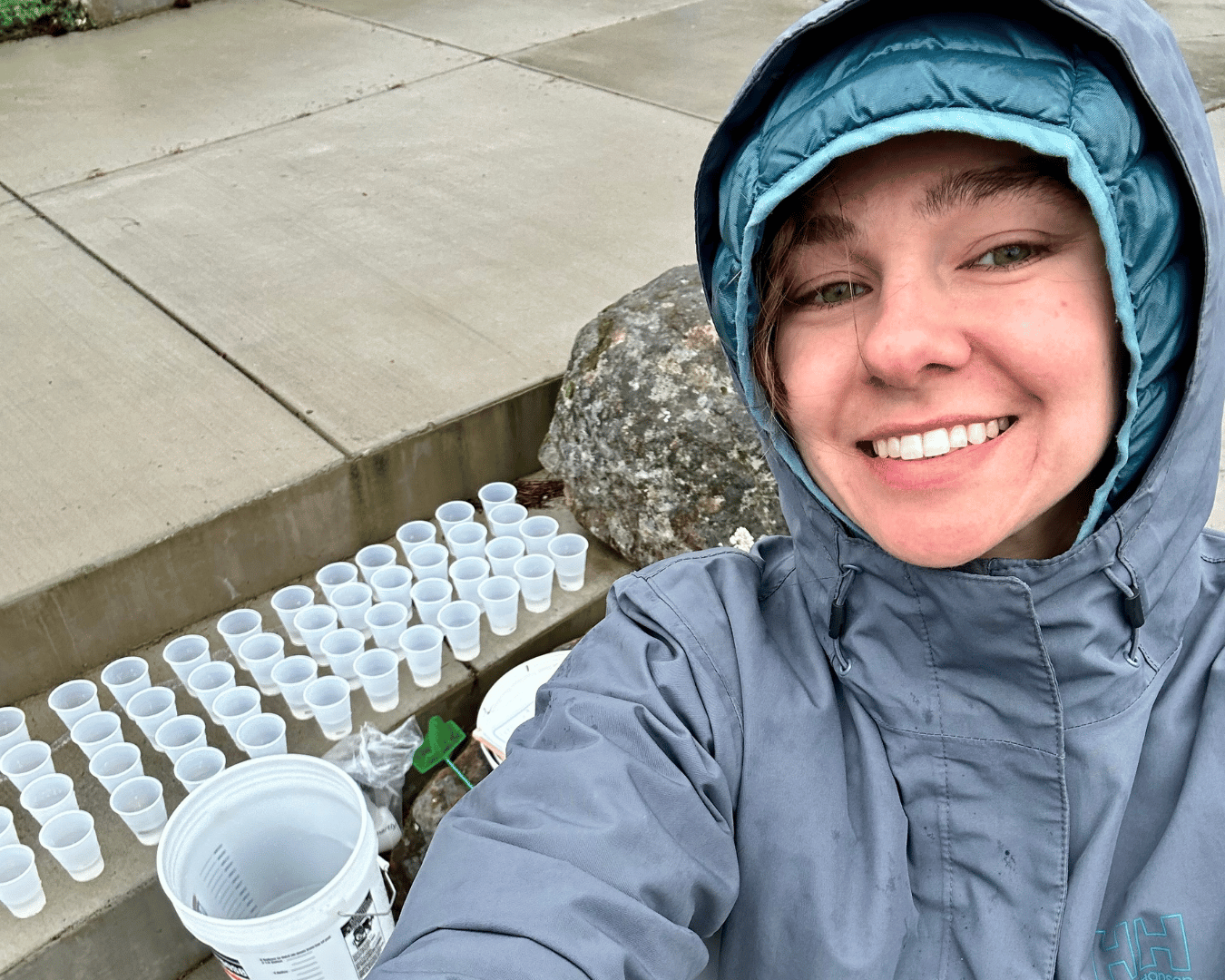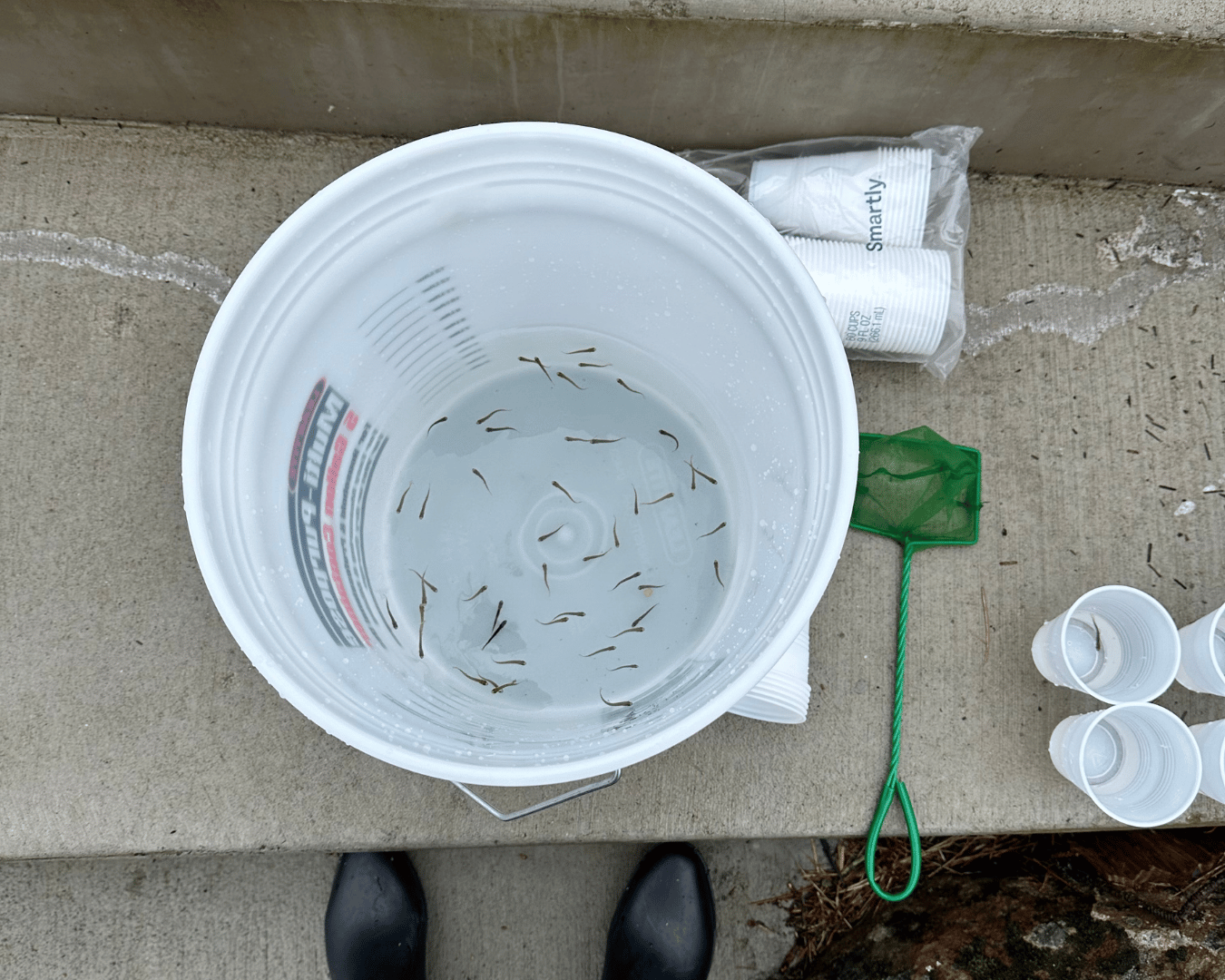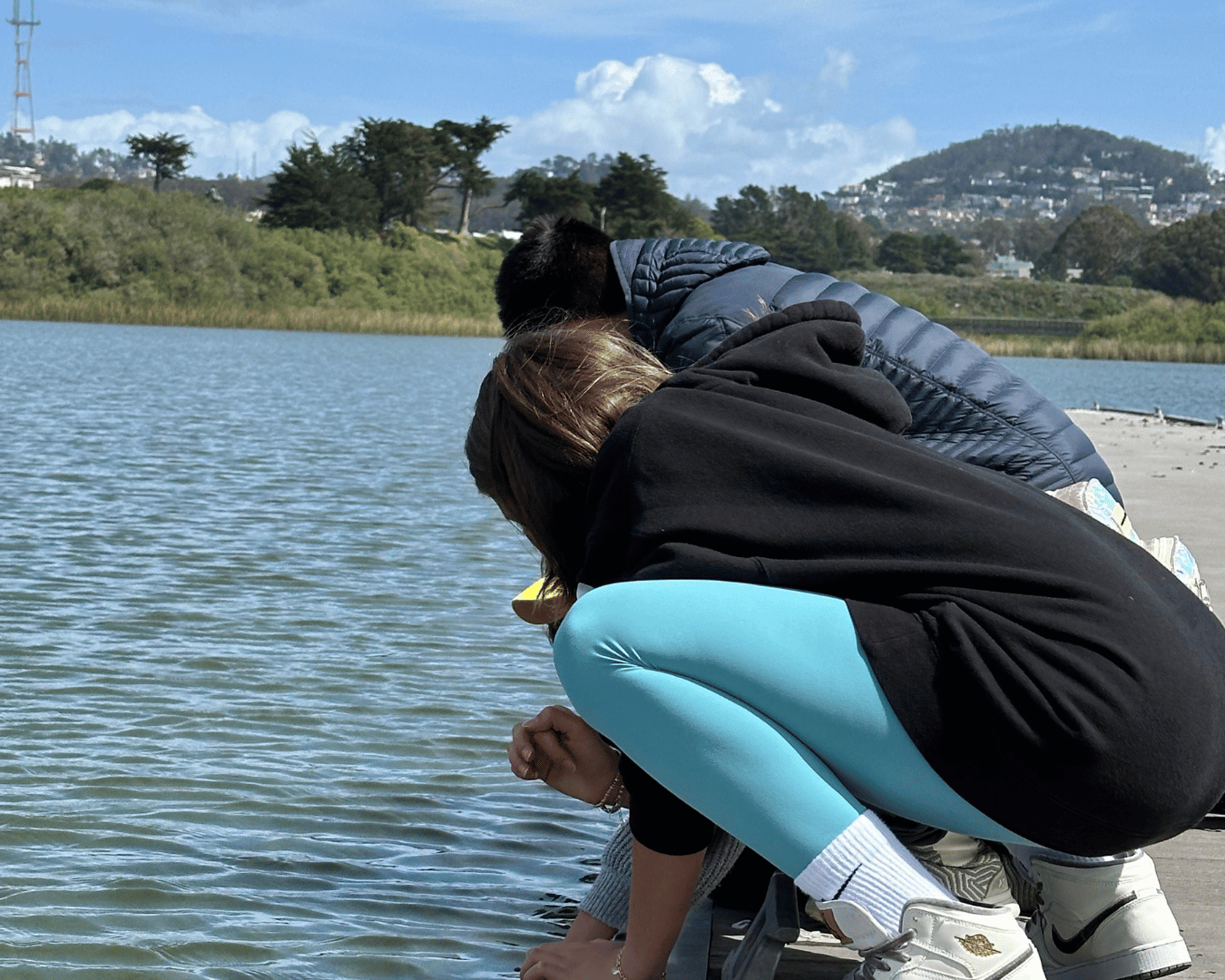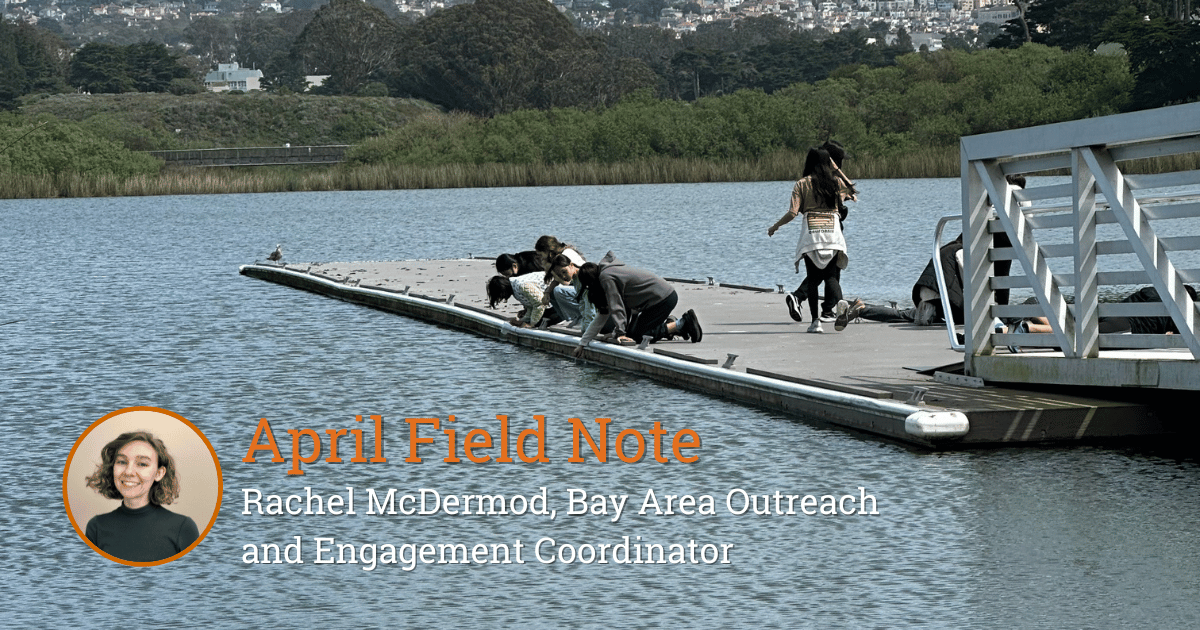Field Note: Releasing Fry with Trout in the Classroom
A Field Note from Lake Merced, San Francisco
by Rachel McDermod, CalTrout Bay Area Outreach and Engagement Coordinator
April 2024
"You brought a cooler, right?" asks California Trout volunteer Bridget as she reaches into the insulated bag slung on her shoulder. "Yep, got one!" I reply as my flimsy lunchbox-turned-cooler strapped to me releases a trickle of water down my pant leg. The thin, cheap fabric of the lunchbox is no match for the piles of ice cubes inside, stacked to the top with a large indent in the center to hold small cups of trout eggs. I smile, shift the dripping bag on my shoulder, and ensure Bridget that my receptacle will do the job required of it: transport these little eggs to two schools in San Francisco, where classrooms with bubbling fish tanks and excited students await.
Grabbing two cups from Bridget, I glance at them before tucking them securely in my bag. Delicate cheesecloth envelops two bunches of small, round eggs, each a vivid shade of orange and slightly smaller than a pea. They remind me of minuscule suns that creep down the horizon during sunset, a deep orange color that stretches across the sky. In addition to the eggs, I take two cups of fish food and stow them in the ice. I hurry to my car and drive to the awaiting schools, carefully ensuring the ride for the eggs is as smooth as possible.


About six weeks after dropping the eggs off in the classrooms, I have the pleasure of joining the classes on their release days at Lake Merced in San Francisco. Each release day I attend is buzzing with excitement as students hop off buses and hurry to the lake. I am tasked with scooping the tiny – and incredibly fast—fry from the buckets they have been transported to the lake in and placing them in small plastic cups that the students will use to gently set them free. Once scooped into the cups, the trout are passed into the hands of eager students.
One school that has paired students up for release has each pair proclaim their trout's name out loud before releasing them into their new habitat. I laugh alongside teachers and students at the variety of names: Bubbles, Jacob M. Trout, and Jeffrey, as well as the ever-popular tendency of students to name the fish after themselves and add a "Jr." These endearing names are so special to hear, as they and the students' gentle nature when handling the trout are evidence of a meaningful connection.
When asked what their favorite part of having these trout in their classroom was, one student responded, "Watching the trout grow up." Similarly, when a participating high school teacher was asked the same question, they answered that they enjoyed watching their students get excited about the trout's growth and development. By the time of their release, these tiny trout have become a big part of the students’ lives, with several of them expressing that they will miss seeing the trout each day as they arrive to school.

Delivering the eggs to the school is quick, but I am received warmly by teachers and students who can't wait to introduce the eggs to their new home. As I hand off the chilled cup of eggs to an elementary teacher, his students press around him, longing to glimpse what the eggs look like in the teacher's hands as he holds them close to his chest, nearly too tall for his students to see.
I say a quick goodbye to the group as the students' faces light up with excitement and their voices beg to return to their classroom so the eggs can be placed in their tank, where they will eventually hatch and grow into fry in the next several weeks. By this point, water is practically pouring down the back of my leg from the ice melting in my makeshift cooler. Still, the eggs are safely in the hands of their new stewards, and wet pants are a small price to pay for that sentiment.
Each year, California Trout makes egg deliveries to classrooms through a partnership with the California Department of Fish and Wildlife (CDFW) in their Classroom Aquarium Education Program, also known as Trout in the Classroom. This program allows California classrooms to raise trout from eggs to fry, all while learning about the importance of trout in California ecosystems through discussion and activities. Once the trout fry are six to eight weeks old, students participate in release days, where the tiny trout receive (adorable) names and well-wishes before being released into CDFW-designated waterways.
Listening to the students' stories about the trout in their classroom and having the opportunity to join their release days feels significant to me. As someone passionate about sharing the wonders of the world around us and sparking curiosity in others, it is incredibly fulfilling and inspiring to share these moments in nature with students, the stewards of tomorrow. When I watch these young people get excited over the tiny miracle of a trout egg, I can't help but see a reflection of myself and the joy I feel in the natural world. I'm thankful to have been a part of Trout in the Classroom this year, and I look forward to next year with anticipation – for the release, and a sturdier egg cooler.





